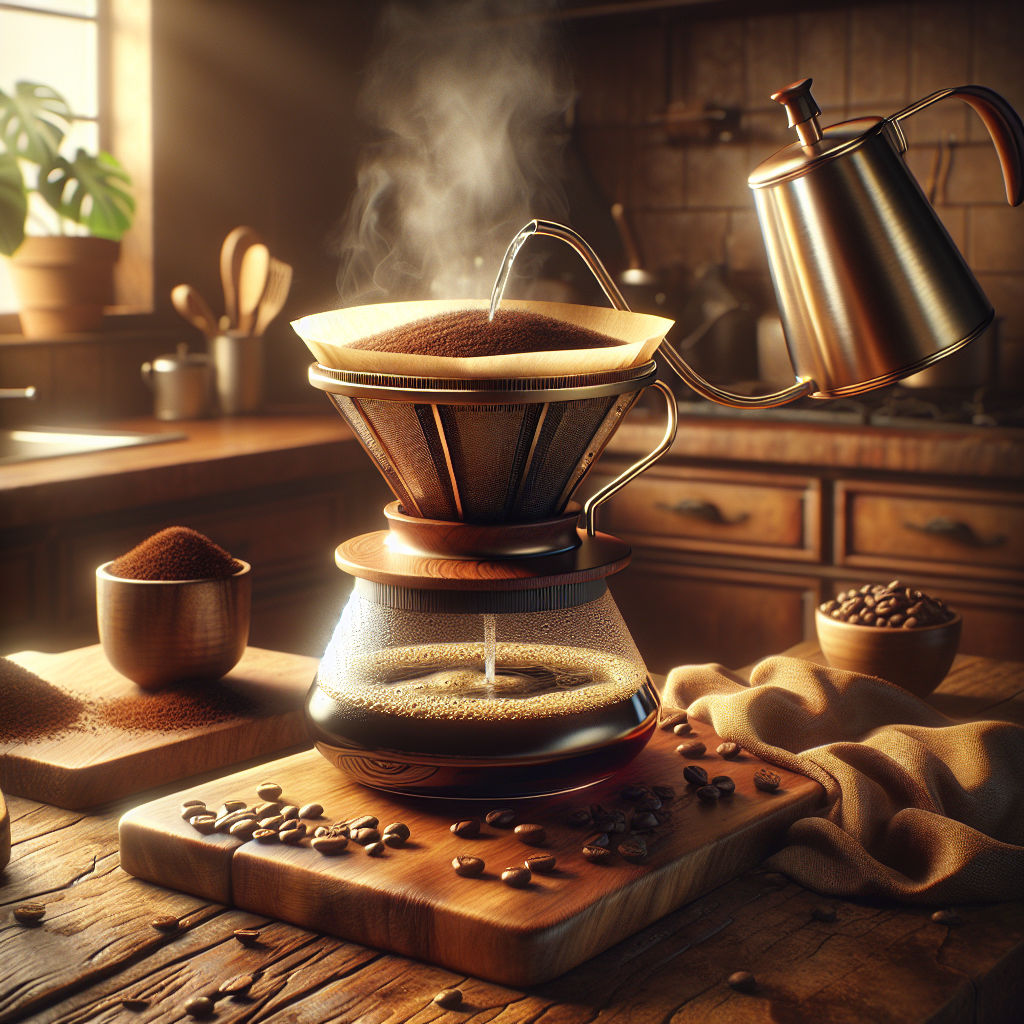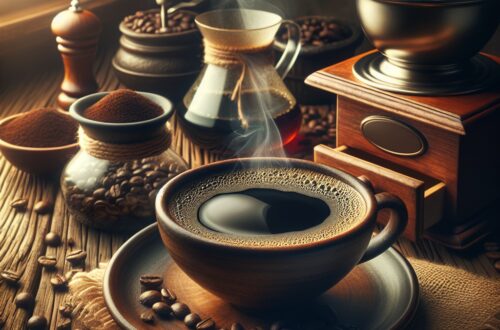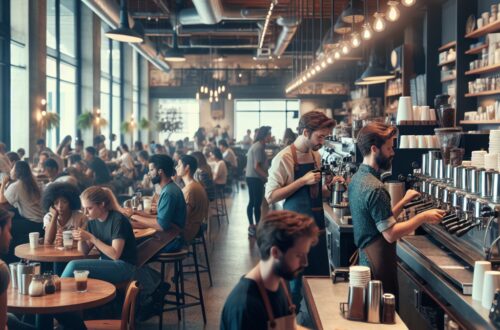What is the Best Way to Make Great Coffee at Home?
There’s something uniquely satisfying about brewing your own perfect cup of coffee at home. Whether you are a seasoned coffee enthusiast or a curious beginner, mastering the art of home brewing is a rewarding experience. This guide will take you through the essential steps needed to craft that perfect cup.
Explore Various Brewing Methods
| Brewing Method | Flavor Impact | Equipment Needed | Pros | Cons |
|---|---|---|---|---|
| French Press | Rich, full-bodied flavor | French press | Simple to use, affordable | Can be gritty if not filtered properly |
| Pour-Over | Bright, complex flavors | Pour-over cone, filter, kettle | High control over brewing | Time-consuming, requires practice |
| AeroPress | Versatile, smooth flavor | AeroPress, filter | Portable, easy to clean | Requires special filters, manual effort needed |
| Drip Coffee Maker | Consistent, predictable flavor | Drip coffee maker | Convenient for multiple cups | Flavor may be less intense |
| Espresso Machine | Rich, concentrated flavor | Espresso machine, grinder | Quick brewing, strong coffee | Expensive, requires technical skill |
1. Invest in Quality Coffee Beans
To make great coffee at home, start with quality coffee beans. Using fresh, high-quality whole beans rather than pre-ground coffee offers the best flavors. Look for beans that have been roasted recently and are from reputable, single-origin sources. You can distinguish beans by their origin, which can provide distinctive flavors to elevate your coffee experience.
Further, understanding the difference between Arabica and Robusta beans is crucial. Arabica beans tend to be smoother and more flavorful, whereas Robusta beans have a stronger, more bitter taste. Reading coffee bean labels and roast dates will help you make informed decisions. For an extensive guide on selecting quality coffee beans, visit our FAQs here.
2. Use the Right Grind Size
The coffee grind size incredibly impacts the flavor extraction. A burr grinder is often recommended over a blade grinder for consistency. Use coarse grind for French press, medium for drip coffee, and fine for espresso. Grinding beans just before brewing ensures the freshest taste.
Your grind size should match the brewing method to avoid over-extraction or under-extraction. Grind size also affects the brewing time; a proper grind size yields balanced flavors. Investing in a quality burr grinder and adjusting it according to the brewing method can significantly improve your coffee brewing experience. More grinding tips can be found in our FAQs here.
3. Measure Coffee and Water Ratios
Accurate coffee-to-water ratios are vital for making a great cup of coffee. A standard ratio guideline is 1:17 (1 gram of coffee for every 17 grams of water). Using a digital scale helps ensure precise measurements, leading to a consistent coffee taste.
These ratios can be adjusted to suit individual taste preferences, affecting the coffee’s strength and flavor. Scaling ratios for larger or smaller batches of coffee is also straightforward with proper measurements. Explore some practical coffee-to-water ratios and experimentation techniques in our FAQs here.
4. Brew with Clean, Filtered Water
The use of filtered water can dramatically affect the taste of your coffee. The ideal brewing water temperature is between 195 to 205 degrees Fahrenheit. Filtered water is preferred over distilled or tap water, ensuring purity and avoiding unwanted flavors like chlorine.
Using the right water and heating it properly using tools or devices designed for precision can make a big difference. Consistent water quality is key in crafting a balanced and flavorful cup of coffee. You can learn more about the impact of water on coffee quality in our FAQs here.
5. Explore Various Brewing Methods
There are numerous brewing methods to explore, each providing a unique flavor profile:
- French Press: Rich and full-bodied.
- Pour-Over: Bright and complex.
- AeroPress: Versatile and smooth.
- Drip Coffee Makers: Consistent and predictable.
- Espresso Machines: Rich and concentrated.
Experimenting with these methods can help you discover the one that best suits your preferences. Each method requires specific equipment, has its pros and cons, and impacts the coffee’s strength and taste. For step-by-step instructions and recommended equipment for each method, visit our FAQs here.
6. Prep with Bloom Technique
Implementing the bloom technique involves allowing a small amount of hot water to saturate the coffee grounds for about 30 seconds before brewing. This step is crucial for releasing trapped gases and enhancing flavor extraction.
The bloom process requires measuring and heating water properly, using an initial pour technique, and timing the bloom phase accurately. Freshly ground coffee beans produce a more pronounced bloom. Learn more about mastering the bloom technique in our detailed FAQs here.
7. Control Brewing Time
Each brewing method has ideal extraction times. For example, French Press requires 4 minutes, while a Pour-Over typically needs 2.5 to 4 minutes. Adjust your brewing times to fine-tune the coffee’s strength and taste to your liking.
Maintaining control over brewing times ensures you achieve the perfect extraction, resulting in a well-balanced cup of coffee. Delve into more detailed guidance on brewing times in our FAQs here.
8. Store Coffee Properly
Proper coffee storage is essential to keep your beans fresh. Use an airtight ceramic or opaque container, and store it in a cool, dark place. Avoid the refrigerator or freezer to prevent moisture and odor absorption, which can impact the coffee’s flavor negatively.
Ensuring proper storage maximizes the shelf life of your coffee beans and preserves their vibrant flavors. For more tips on storing coffee beans, check out our FAQs here.
9. Clean Your Equipment Regularly
Residues from previous brews can alter your coffee’s taste. Cleaning all brewing equipment, including coffee makers, grinders, and French presses, regularly removes oils and buildup that could taint your fresh brew.
Maintaining clean equipment helps in crafting a pure and uncontaminated coffee cup every time. For detailed instructions and best practices on cleaning coffee equipment, explore our FAQs here.
10. Experiment and Adjust to Taste
Coffee brewing is both an art and a science; feel free to experiment and adjust your brewing methods to suit your taste preferences. Taste and feedback are essential in refining your technique and discovering what works best for you.
Each step of the brewing process offers opportunities to tweak and enhance your coffee experience. For more personalized tips and troubleshooting advice, consult our FAQs here.
Conclusion
Brewing great coffee at home is a blend of the right beans, grind size, water quality, and brewing method. By following these steps and exploring various techniques, you can enjoy a rich, flavorful coffee experience every day. Take the time to invest in quality equipment and ingredients, and don’t hesitate to experiment.
For further reading and to enhance your coffee knowledge, browse our other blog content and [FAQs here](https://thecoffeemondays.com/coffee-faq/).
Shop at Breville now!
https://breville.oie8.net/oqDqrE
Shop Coffee Machine at Amazon now!
Click here!





